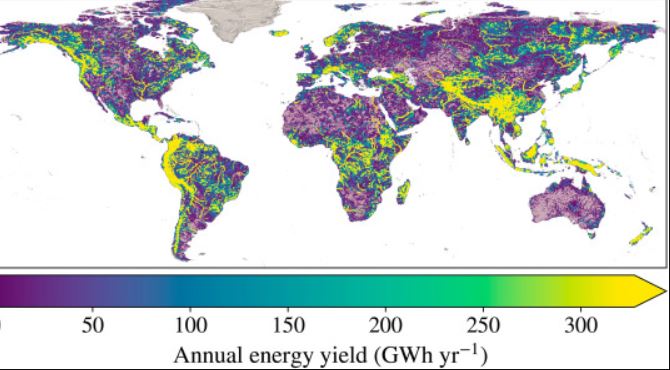In-stream hydrokinetic power generation at utility scale has the potential to provide baseline power to stabilize the grid enabling variable power sources such as wind and solar to be more effective. In river, canal, dam outflow or ocean current settings it can provide DISPATCHABLE power on a 24/7 basis. In tidal flows, the output is schedulable in accordance with the ebb and flow of the tide.
The industry began to develop about 20 years ago when governments started to support the the concept of making predictable green power from tidal flows. Most of the focus was on developing bottom mounted bladed turbines similar to our modern wind turbines. These systems were heavily funded by the EU, the UK government and the Scottish government. The EMEC test centre was established on Orkney Island in Scotland and most European technologies were tested there and still are being tested there.
Many problems arose and it was increasingly obvious that these bottom mounted turbines were very heavy, very expensive to put into the water and retrieve and that (probably do to the fact that water is 800 times more dense than air) they didn’t function as hoped for.
In an ORE Catapult report written in 2016, a world class expert stated: “There is strong evidence to show that the marine energies sector has been relatively poor at identifying and focusing on innovations with the strongest potential” and “Compared with bottom fixed devices, there is growing recognition that moored buoyant platforms offer potential advantages in power level, cost of station-keeping and ease of deployment”.
In 2010, when Jupiter Hydro was incorporated, its focus was on a floating barge solution from day one when no other company was doing this. In 2023, most active testing in the world is with floating barge mounted turbines. Four out of five of the technologies slated to go into the the Minas Channel in the Bay of Fundy are floating technologies. However, these technologies are still utilizing bladed technologies which are now far easier to access for repairs but are far from being proven to be reliable. The major issue in using floating barges in the tidal industry is the anchoring of the barge and the power cable to it. Most power cables have failed and the anchoring systems have not proven to be capable of orienting the bladed turbines at 90 degrees to the flows when the wave conditions are not favorable.
Floating technologies, on the other hand, are very simple to anchor and run a power cable to in a river, the problem here is with the debris found in all river flows.
Look at “Technology Advantages” to see how Jupiter deals with all these issues.
Huge amounts of power are needed for transition to green energy, a recent study (https://www.sciencedirect.com/science/article/pii/S0960148121006297) indicated that over 58,000 TW annually of power is available from rivers. Tidal flows provide another vast source of power as do ocean currents and outflows of dams.

